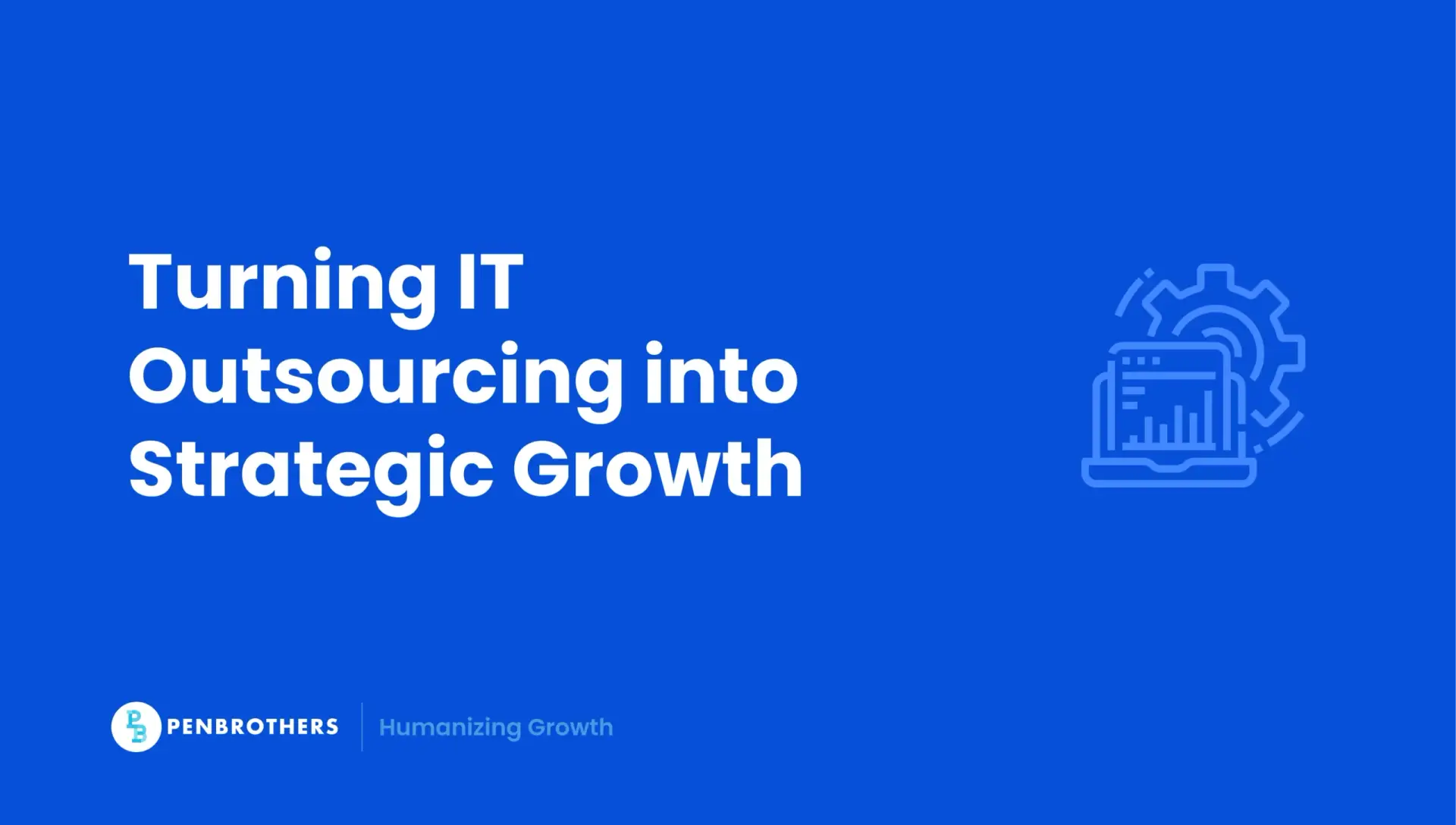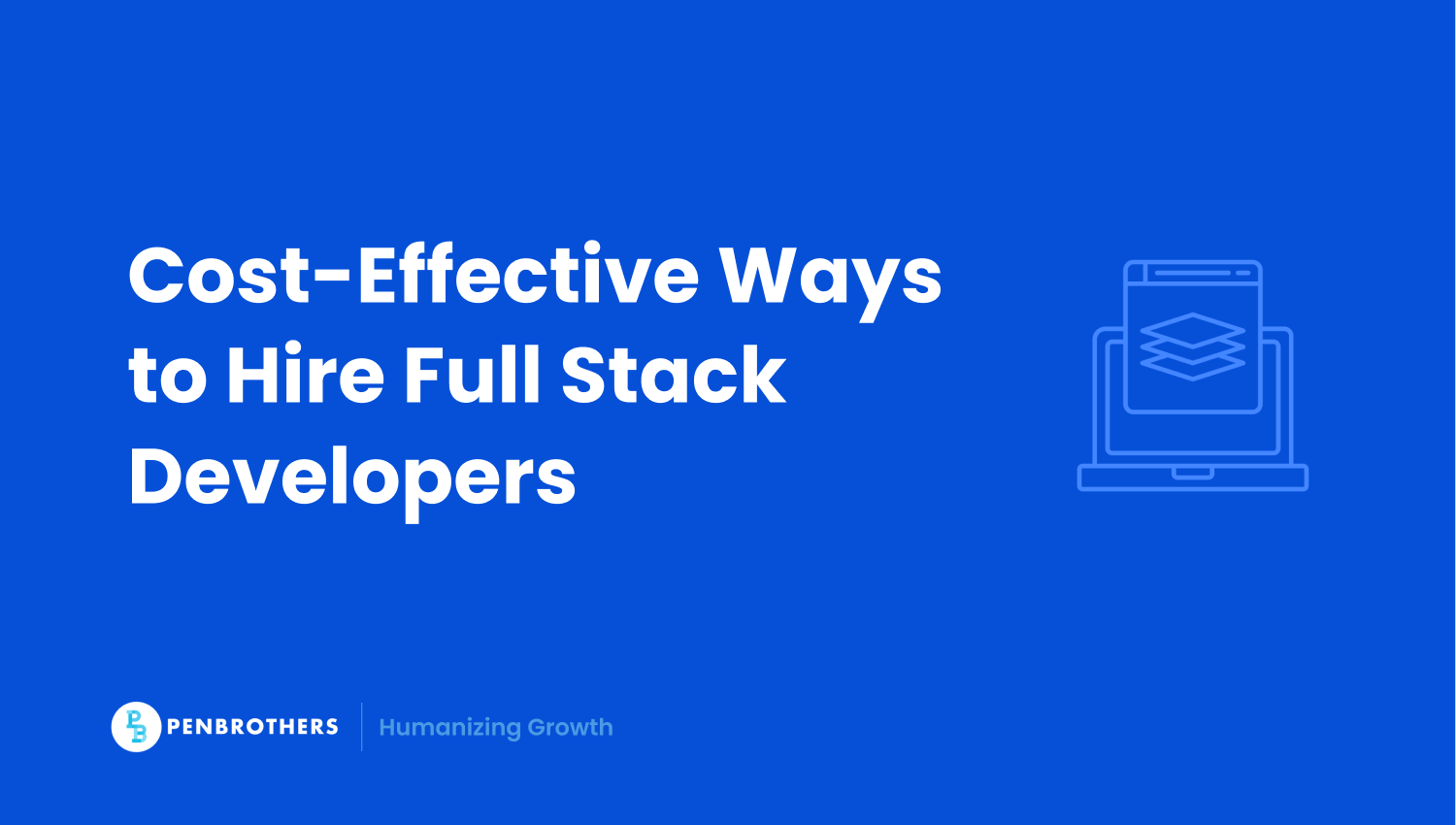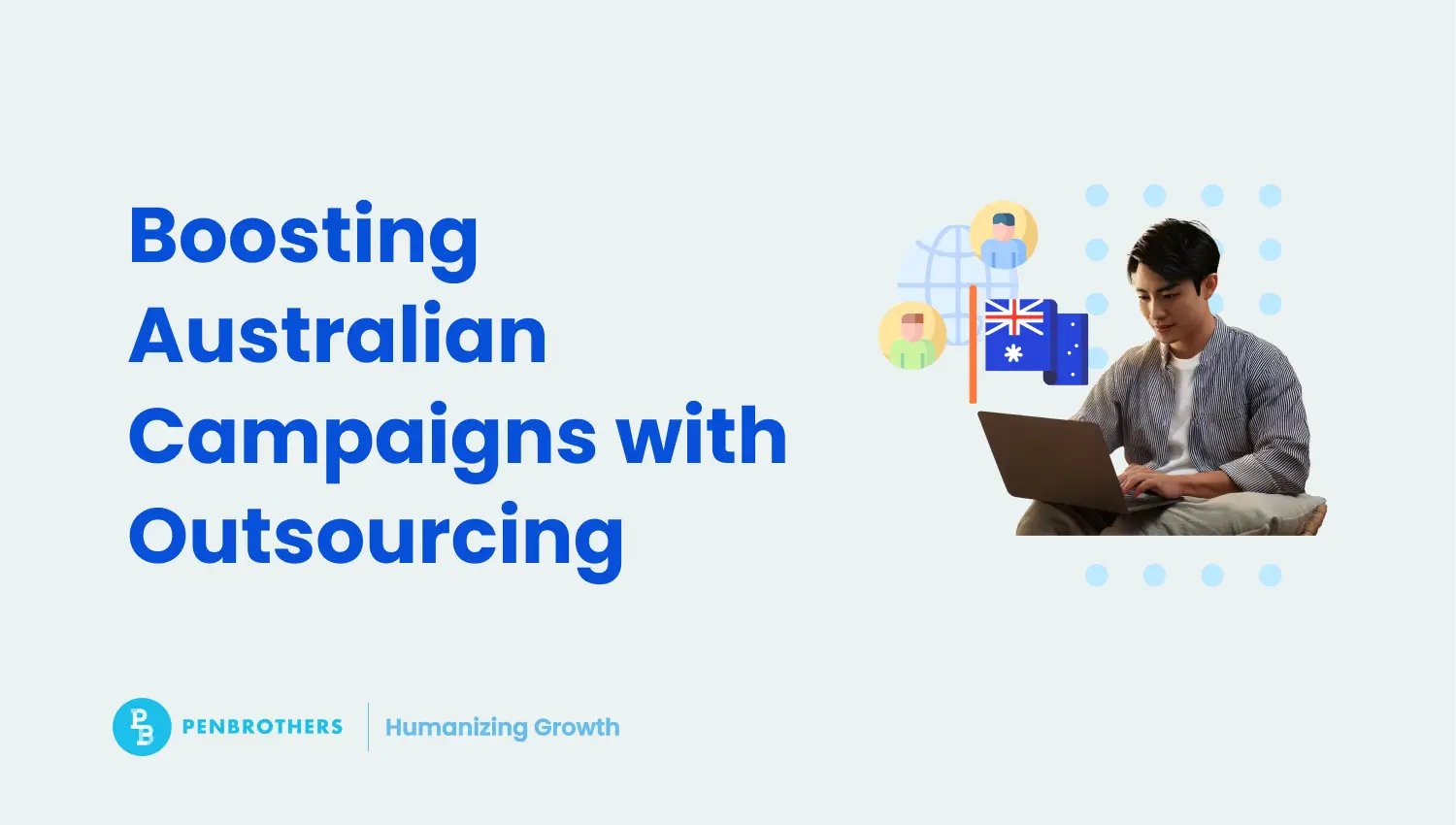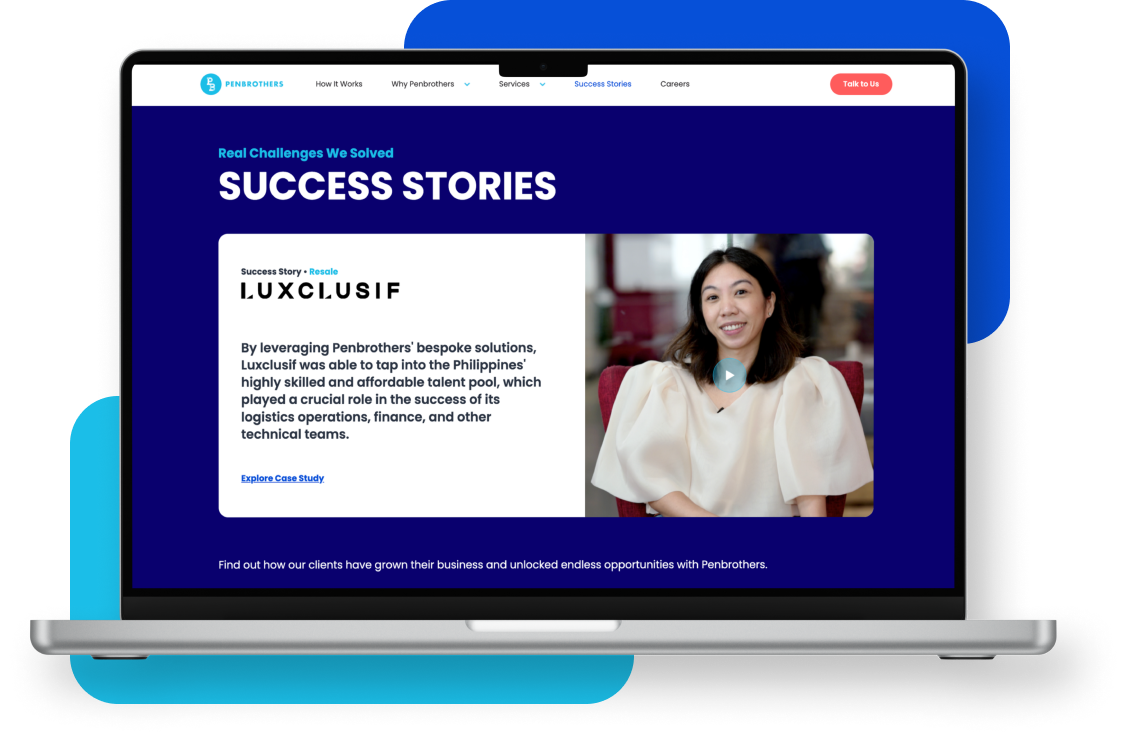What's Inside?
Rethinking Information Technology Outsourcing Services in Australia

Australia’s IT spending will hit AU$147 billion in 2025, up 8.7% from last year. Most of that’s going to cloud computing, cybersecurity, and AI integration. Meanwhile, senior software engineers typically earn ~$130k–$185k, and cloud architects often command ~$190k–$210k with top-end packages exceeding $200k. For many Australian businesses, the math doesn’t work anymore.
This is where information technology outsourcing services have evolved. The old model was about cutting costs and shipping work overseas. That’s not what this is anymore. Modern outsourcing is a framework for building companies that can scale intelligently and compete without burning through capital to hire talent that doesn’t exist locally.
The question has changed. It’s no longer whether to outsource. It’s how strategically you can do it.
Key Takeaways
- A Strategic Solution to Australia’s Tech Talent Crisis: IT outsourcing has become a strategic imperative for Australian businesses to overcome the country’s critical and costly tech talent shortage. It has evolved from a simple cost-cutting tactic into an essential tool for accessing specialized skills and enabling sustainable growth.
- The Philippines is an Ideal Partner for Australian Companies: The Philippines stands out as a premier offshore destination for Australian businesses due to a unique combination of advantages. These include significant cost savings (up to 70%), a deep and English-proficient talent pool, strong cultural affinity, and a minimal time zone difference (2-3 hours) that allows for substantial real-time collaboration.
- A Full Spectrum of High-Value IT Services Can Be Outsourced: The scope of IT outsourcing has expanded far beyond basic helpdesk support. Australian companies can now outsource their entire IT ecosystem, from core infrastructure management and 24/7 cybersecurity to high-value functions like custom software development and strategic IT consulting.
- Risk is Managed Through a Structured Partnership, but Liability Remains: While risks such as data security and loss of control exist, they can be effectively mitigated through a structured approach. This includes rigorous partner due diligence, formal contracts and Service Level Agreements (SLAs), and a focus on team integration. However, the Australian company remains legally accountable for data protection under the Australian Privacy Act.
The Core Challenge: Australia’s Tech Talent Crisis
Australia needs 1.2 million tech workers by 2030. To get there, the country will need 43,000 skilled migrants, 42,000 new tech graduates, and 101,000 workers transitioning from other industries. These aren’t projections from a consultancy trying to sell you something. This comes from the Australian Government’s own Digital Skills Organisation and Tech Council of Australia.
It won’t happen.
The Australian Computer Society confirmed what everyone already knows: even with the tech workforce passing one million, Australia will fall short of the 1.3 million target. The result is 58% of employers reporting digital skill shortages that cost the economy $3.1 billion annually. That’s $9 million every single day.
For SMEs, this isn’t an economic statistic. It’s a Tuesday morning realizing you can’t hire a cloud engineer at any price the business can sustain. The local market can’t supply what companies need. So they look elsewhere.
Understanding Information Technology Outsourcing Services
Information technology outsourcing services, in the way we talk about them now, means engaging external partners to handle IT-enabled processes, infrastructure, and applications. The goal shifted. It’s no longer just about cost reduction. It’s about scalability, efficiency, and innovation.
Three models dominate:
Onshore outsourcing keeps everything in Australia. High control, high cost, same talent shortage you’re trying to solve.
Nearshore outsourcing works well for the US partnering with Mexico, but Australia’s geography limits ideal options like Singapore or New Zealand, where talent pools are smaller than offshore hubs.
Offshore outsourcing means partnering with firms in countries like the Philippines or India. Lower costs, deeper talent pools, and the ability to run operations around the clock across time zones.
In 2025, the smartest companies moved past traditional outsourcing toward offshore staffing. A model that keeps control local while accessing global capability.
Beyond Outsourcing: The Rise of Offshore Staffing
Traditional business process outsourcing meant handing work to a vendor and hoping for the best. Limited visibility, less control, teams serving multiple clients with divided attention.
Offshore staffing works differently. You build your own team. They work for you, report to you, integrate with your systems. The difference is who handles payroll, HR, compliance, and infrastructure. That’s where your partner comes in.
Penbrothers operates in this model. Australian companies get full operational control. The offshore staffing partner manages everything else: recruiting, legal compliance, benefits, office space, IT support.
You get the control of an in-house team with the cost efficiency of global talent. The gap between traditional outsourcing and internal hiring closes. Global collaboration becomes a competitive advantage instead of a risk you’re managing.
What Can Be Outsourced: The Full Scope of IT Services
The scope of what you can outsource has expanded past the point where most business leaders realize. You’re not limited to helpdesk support and basic admin anymore. Today’s information technology outsourcing services cover the entire IT ecosystem.
Core Infrastructure and Operations
Managed IT services handle comprehensive system responsibility: proactive monitoring, regular maintenance, ongoing support. Infrastructure management covers servers, storage, networking equipment, data centers. Network management monitors and troubleshoots every device in your system. Cloud services management handles AWS, Azure, Google Cloud—planning migrations, managing infrastructure, optimizing costs, ensuring security and data sovereignty.
Application and Software Development
Custom software development builds bespoke applications tailored to your specific processes. Mobile and web development creates corporate websites, e-commerce platforms, iOS and Android applications from concept through deployment. Application management provides ongoing support: bug fixes, performance tuning, feature enhancements.
Security and Compliance
Cybersecurity services have become critical. 24/7 threat monitoring from dedicated Security Operations Centers. Vulnerability assessments and penetration testing. Firewall and endpoint security management. Incident response when breaches occur. Data backup and disaster recovery ensures business continuity. Compliance management helps businesses meet ISO 27001, GDPR, the Australian Privacy Act, and APRA prudential standards for financial institutions.
Support and Strategy
IT support and helpdesk handles technical assistance via phone, email, live chat, ticketing systems. Available 24/7 if you need it. IT consulting and virtual CIO services provide strategic technology leadership without the cost of a full-time executive. You get technology roadmap development, IT budgeting, and alignment between technology investments and business goals.
The pattern is clear: outsourcing moved up the value chain. The strategic advantage isn’t in offloading basic tasks anymore. It’s in accessing complex, high-value functions. The skills in shortest supply in Australia—cybersecurity, cloud architecture, specialized software development—are exactly what you can now outsource.
For a growing SME, this means access to enterprise-grade IT strategy, 24/7 security teams, and innovative development capacity at operational costs that make sense. You can compete with larger competitors without their overhead.
The Strategic Advantages for Australian Companies
Outsourcing stopped being about minimizing expenses. It’s about maximizing outcomes now. Here’s how Australian businesses gain an edge through information technology outsourcing services:
Radical Cost Efficiency
Outsourcing reduces operational expenses by 20-30%. Staff cost savings reach up to 70%. Predictable, fixed pricing converts capital expenses into manageable operating costs. The savings fund innovation and growth instead of disappearing into inflated local salaries.
Access to Specialized Global Talent
You can hire world-class expertise in AI, cybersecurity, and software engineering without the salary inflation of the Australian market. The constraint disappears. You’re no longer competing for a handful of local candidates. You’re sourcing from a global pool.
24/7 Operations and Faster Time-to-Market
Offshore teams enable continuous progress across time zones. Your Australian team finishes their day and hands off to a team just starting theirs. Projects move faster. Time-to-market compresses. Customer service runs around the clock. It’s a competitive differentiator that improves satisfaction and operational resilience.
Scalability and Agility
Teams expand or contract based on demand. No complexity of hiring or layoffs. A startup that just secured funding can instantly expand its development team. An e-commerce business can triple customer support for the holiday season and scale back in January. You adjust resource allocation in real-time, unconstrained by local hiring bottlenecks.
Sharper Focus on Core Business
With IT management delegated, leadership focuses on revenue, product innovation, and strategic decisions. Every hour a sales manager spends troubleshooting a software issue is an hour not spent closing deals. Outsourcing removes the technological distractions. Your most valuable resources (your people) dedicate their energy to what they do best.
These benefits compound. Access to specialized talent lets you build better products faster. Faster time-to-market generates revenue sooner. Cost savings fund aggressive go-to-market strategies. Scalability ensures you can support rapid growth. All possible because your core domestic team focuses on strategy and customers, not managing servers.
Outsourcing transforms from an operational tactic into a growth engine.
Addressing the Risks: Building Reliable Outsourcing Partnerships
Every outsourcing decision involves risk. But reliability is built through structure, not chance. Common concerns include loss of control, hidden costs, security breaches.
Most outsourcing failures aren’t inherent to the model. They result from inadequate planning, poor partner selection, and lack of active management. A proven framework mitigates these risks:
Conduct rigorous due diligence. Check client references and case studies. Review portfolios. Assess talent sourcing and recruitment processes. Understand internal security protocols and data privacy policies.
Establish formal contracts and Service Level Agreements. Define scope, responsibilities, performance metrics, guaranteed response times, and consequences for non-performance. This formalizes expectations and provides a framework for accountability.
Prioritize integration and communication. Establish daily or weekly routines. Use shared project management tools like Jira or Asana for real-time visibility. Define clear communication protocols. Invest time in cultural alignment.
Implement robust security protocols. Select partners with verifiable security credentials like ISO 27001 certification. Use strong contractual safeguards including non-disclosure agreements. Remember: Under the Australian Privacy Act, businesses remain legally accountable for protecting personal data when outsourcing to offshore providers, as confirmed by the Office of the Australian Information Commissioner (OAIC) and supported by Australian Signals Directorate guidelines.
Starting with a pilot project allows testing of a partner’s capabilities and processes in a lower-risk scenario, helping to avoid costly mistakes before full-scale engagement. Test the partner’s capabilities, communication processes, and quality in a lower-risk environment before scaling.
These practices ensure accountability, visibility, and performance consistency. Outsourcing becomes a managed, high-trust partnership instead of a transaction you’re monitoring nervously.
Why Australian Companies Choose the Philippines
Among global outsourcing destinations, the Philippines stands out for Australian businesses. Four critical advantages explain why:
Cost Efficiency
The cost efficiency is transformative. For example, data from our 2025 Salary Guide shows that a Full Stack Developer in the Philippines earns between $1,900 and $3,800 USD per month, while the same role in the US commands $9,000 to $12,000 USD. This represents a potential salary cost saving of over 70%, allowing companies to build larger, more capable teams and reallocate capital toward innovation and market expansion.
For Australian companies facing intense pressure from high domestic salaries, this level of efficiency is transformative. You can build larger, more capable teams and reallocate savings toward innovation and market expansion.
Deep English-Proficient Talent Pool
The Philippines has over 116 million people with a median age of 26.1. Young, digitally savvy, eager to engage in the global economy. Critically: a very high level of English proficiency exists. The Philippines boasts a large English-proficient workforce, with survey scores on business English proficiency among the highest globally, enabling effective communication in professional settings. This minimizes communication breakdowns, ensures project requirements are clearly understood, and facilitates seamless collaboration.
Cultural Affinity and Time Zone Alignment
The Philippines’ work culture is often described as Westernized due to strong historical influences. Greater cultural affinity with Australian business practices compared to other offshore locations. Filipino culture is renowned for its service orientation and hospitality, translating into dedicated and customer-focused work ethic.
The time zone alignment is significant. The Philippines matches Perth and sits only two to three hours behind Sydney and Melbourne. Substantial overlap in daily working hours. Real-time communication, collaboration, and team meetings become straightforward. This advantage doesn’t exist with offshore hubs in Eastern Europe or the Americas.
You get cognitive diversity with cultural proximity. New perspectives and problem-solving approaches from a different national context, fostering innovation, without the friction and communication barriers from vast cultural divides.
Mature and Supportive Outsourcing Ecosystem
The BPO and IT outsourcing industry generates over US$30 billion in annual revenue and provides more than a million skilled jobs in the Philippines. This maturity means robust infrastructure, a continuous pipeline of trained talent, and strong government backing.
Australia is the second-largest client market for the Philippines’ BPO industry. Providers have extensive experience working with Australian companies and understanding their specific needs. The country has strong data protection laws, including the Data Privacy Act of 2012, providing a solid legal framework that gives foreign companies confidence in security and privacy.
These conditions make the Philippines the ideal partner market for Australia’s next-generation outsourcing strategies.
The Future of IT Outsourcing: Trends Shaping 2025 and Beyond
The outsourcing model is evolving fast. Understanding the trends shaping 2025 and beyond matters if you’re building a strategy meant to last.
Shift to Value-Based Outcomes
The traditional model focused on cost-per-hour metrics. That’s becoming obsolete. Organizations now prioritize value-based outcomes: accelerating time-to-market, improving customer satisfaction, driving revenue growth. The shift is toward flexible, outcome-based contracts where provider success ties directly to client business results. The key metric is no longer cost per hour. It’s value per deliverable.
AI and Automation
Artificial intelligence and automation are reshaping the industry. 78% of executives already leverage AI in operations, including outsourced services. AI-powered tools and automation handle routine, repetitive, transactional tasks: basic helpdesk inquiries, data entry, system monitoring. This doesn’t eliminate human teams. It elevates their role. Offshore professionals shift from performing manual processes to managing AI systems, analyzing data-driven insights, and handling complex, creative, strategic work requiring critical thinking and human judgment.
Cybersecurity as a Core Priority
Cumulative cybercrime costs for Australian businesses exceeded $33 billion from 2020 to 2024. Cybersecurity has become paramount in any outsourcing decision. The increasing complexity of threats and severe shortage of cybersecurity professionals make it necessary for businesses to outsource security functions to access specialized expertise. New Australian government regulations, including mandatory ransomware payment reporting enforced from 2026, increase compliance burden and heighten the need for expert guidance.
Hybrid and Multi-Hub Models
Companies are moving away from concentrating all offshore operations in a single location. They’re adopting multi-hub strategies, diversifying teams across multiple countries to mitigate geopolitical, economic, and operational risks. Hybrid models blend onshore and offshore teams strategically. Onshore teams focus on client-facing strategy and management. Offshore teams drive development and operational execution. This creates a more resilient, flexible, globally integrated workforce.
These trends point toward a future where offshoring is less about labor arbitrage and more about strategic capability acquisition. As AI absorbs routine tasks, the value of human team members gets defined by complex problem-solving, critical thinking, and creative contribution.
The human element becomes more critical, not less. The most successful outsourcing strategies will be fundamentally human-centric. The ability to source, develop, and integrate high-potential talent determines long-term success.
The Strategic Imperative for Australian Leaders
In a market defined by skill shortages and economic pressure, information technology outsourcing services have become a cornerstone of strategic growth. They enable Australian companies to scale faster, operate smarter, and innovate continuously.
The takeaway is clear: the future belongs to organizations that view outsourcing as a strategic capability, not a transactional fix. With the right partner—one built on systems, reliability, and integration—Australian businesses can build global teams that actually work.
The question isn’t if you should outsource IT. It’s how strategically you can do it.
If you’re ready to explore what that looks like for your business, start the conversation here.
Frequently Asked Questions
It has become essential primarily due to a critical shortage of skilled technology professionals in Australia and the associated high cost of local hiring. Outsourcing allows companies to access a global talent pool to fill these skills gaps, reduce operational costs by up to 70%, and remain competitive.
In traditional outsourcing, you typically hand over an entire function to a third-party vendor who manages both the work and the team. With offshore staffing, you build your own dedicated, integrated team in another country. A local partner handles the HR and administrative support, but you maintain direct control over your team’s daily work and culture.
The Philippines is an ideal partner for Australia for several key reasons: it offers significant cost savings, a large pool of highly skilled, English-proficient talent, and strong cultural alignment. Most importantly, the minimal time zone difference (only 2-3 hours for eastern states) allows for substantial overlap in working hours, enabling seamless real-time communication and collaboration.
Virtually the entire IT ecosystem can be outsourced. This includes core infrastructure (such as managed IT and cloud services), software and application development, a full range of cybersecurity services (like 24/7 threat monitoring), and both tactical and strategic IT support (from helpdesk to virtual CIO services).
Yes. Under the Australian Privacy Act, the Australian business remains legally accountable for the protection of any personal data it collects, even when that data is handled by an overseas service provider. This makes it essential to choose a partner with robust and verifiable security credentials and to have strong contractual safeguards in place.




